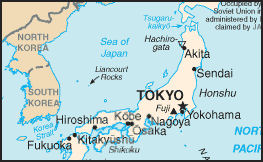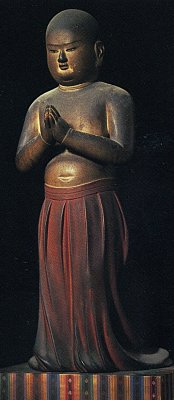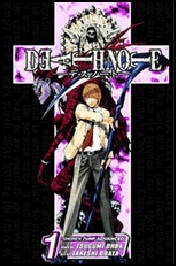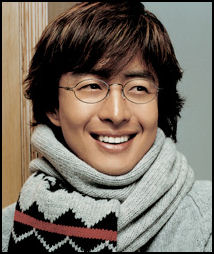SOUTH KOREA AND JAPAN
 Japan and South Korea are closely linked historically and culturally but they also have a long history of animosity and distrust. Japan has traditionally has been regarded by Koreans as a bitter enemy. The Japanese invaded Korea three times, including twice with full scale invasions in the 16th century that devastated Korea. During the Japanese occupation of Korea between 1910 and 1945, the Japanese enslaved Korean men, forced Korean women into prostitution and tried to wipe out Korean culture.
Japan and South Korea are closely linked historically and culturally but they also have a long history of animosity and distrust. Japan has traditionally has been regarded by Koreans as a bitter enemy. The Japanese invaded Korea three times, including twice with full scale invasions in the 16th century that devastated Korea. During the Japanese occupation of Korea between 1910 and 1945, the Japanese enslaved Korean men, forced Korean women into prostitution and tried to wipe out Korean culture.
The Korean peninsula is only about 100 miles away from the main islands of Japan. As much as the Japanese are loath to admit it, many of them descended from Koreans and the earliest Japanese civilizations were greatly influenced by early Korean dynasties. Murals inside A.D. 7th century tombs found near Nara, the first capital of Japan, look almost exactly like those found in tombs in Korea around the same time and earlier.
The first Buddhist monastery in Japan was founded by Korean monks, Korean scholars tutored Japan's most celebrated princes, Korean immigrants introduced Chinese medicine to Japan and by 815 one third of all Japanese noblemen descended from Koreans.
As much as the Koreans are loath to admit it, Japan over the years has helped Korea in many ways. Japan introduced Korea to Western culture in the early 20th century and built schools and hospitals and provided Korea with machinery and expertise to set in motion its economic miracle in the 1970s.
Websites and Resources
Good Websites and Sources: Council of Foreign Relations Report cfr.org/publication/9108/japans_relationship_with_south_korea ; Wikipedia Post War Timeline Wikipedia ; Japanese Government Page mofa.go.jp ; Japan and South Korea Rivalry latimes.com/2009 ; Island Issue Washington Post
Links in this Website: JAPANESE MILITARY Factsanddetails.com/Japan ; CHANGING JAPANESE MILITARY Factsanddetails.com/Japan ; AMERICAN MILITARY IN JAPAN Factsanddetails.com/Japan ; JAPAN AND THE WORLD Factsanddetails.com/Japan ; TERRORISM, PIRACY AND KIDNAPPING AND JAPAN Factsanddetails.com/Japan ; JAPAN, IRAQ, IRAN AND AFRICA Factsanddetails.com/Japan ; SOUTH KOREA AND JAPAN Factsanddetails.com/Japan ; NORTH KOREA AND JAPAN Factsanddetails.com/Japan ; CHINA AND JAPAN Factsanddetails.com/Japan ; RUSSIA AND JAPAN Factsanddetails.com/Japan ; UNITED STATES AND JAPAN Factsanddetails.com/Japan ;
Good Websites and Sources on Foreign Affairs : Ministry of Foreign Affairs of Japan mofa.go.jp and mofa.go.jp ; Paper on Development of Japanese International Relations allacademic.com ; Wikipedia article on Foreign Policy of Japan Wikipedia ; Foreign Policy Magazine on the New Hatoyama Government foreignpolicy.com ; Electronic Journal of Contemporary Japanese Studies japanesestudies.org ;The World and Japan Database Project ioc.u-tokyo.ac.jp ;Japan in the World (last updated in 2003) iwanami.co.jp/jpworld ; Book: Japan’s International Relations: Politics, Economics and Security amazon.ca/Japans-International-Relations
Think Tanks and Research Groups: Japan Policy Research Institute jpri.org ; The Japan Forum on International Relations jfir.or.jp/e ; Japan Watch, Commentary on Political and Economic Issues jipr.org ; Japanese Institute of Global Communications glocom.org ; Japan Analysis and Research Through Internet Information dandoweb.com ; Documents Related to Postwar Politics and International Relations ioc.u-tokyo.ac.jp ; Foreign Aid Organizations: Japan and the IMF imf.org ; World Bank (click countries at the top or do a search) worldbank.org ;Japan International Cooperation Agency jica.go.jp ;
History of Relations Between Japan and Korea

Buddhism was likely
introduced to Japan
from Korea Hideyoshi Toyotomi launched two unsuccessful invasions of Korea---in 1592 and 1597. Before they were driven out, Hideyoshi's armies killed 100,000 Koreans. A mound near Kyoto known as Mimizuka contains the chopped-off noses of hundreds (maybe thousands) of Koreans killed in the campaign. Hideyoshi also made plans to invade China. The second invasion of Korea was aborted after Hideyoshi's death in 1598.
After the Russo-Japanese War in 1904, the Japanese essentially took control of Korean and annexed the country in 1910 after brutally putting down a guerilla insurgency. After the annexation, the Korean army was disbanded, the Japanese resident-general was put in charge of Korea, and a colonial government was established in Seoul, whose name was changed to Keijo.
Under Japanese rule, Koreans were not allowed to speak their language, sing traditional songs or wear traditional clothes. Korean temples and shrines were destroyed, Korean history was banned from schools and Koreans were forced to worship at Japanese Shinto shrines and revere the Japanese emperor.
During the Japanese occupation few children finished grade school. Instead they were forced to do things like take part in fly-killing competitions with the students who killed the most flies winning a prize. In school, Korean children were forced to take Japanese names and they were severely punished whenever they uttered a word of Korean instead of Japanese. Recalling those days former South Korea President Kim Dae Jung said, we "were forced to bow ritually to the picture of the Japanese emperor each day. If we were caught so much as muttering Korean, we were punished, sometimes severely."
The Japanese occupation of Korea ended after World War II, Japan and South Korea normalized relations in 1965. Seoul dropped the issue of compensation for wrongs committed during the colonial period and World War II.
In September 1984, South Korea President Chun Do Hwan visited Japan. It was the first visit by a South Korea head of state since South Korea gained independence in 1948. Emperor Hirohito gave a speech to mark the occasion in which he said: “there was for a brief period in this mountains an unfortunate past between our two countries. This is truly regrettable, and it will not be repeated again.”
South Koreans in Japan, See People, Minorities.
Anger Towards Japan in Korea
Koreans feel that Japan needs to apologize for the Japanese occupation of Korea from 1912 to 1945 and the comfort women issue. In June 1995, after Japanese Foreign Minister Michio Watanabe characterized the repressive and brutal Japanese occupation of Korea as "peaceful," students in Korea responded by rioting, burning effigies, throwing eggs at the Japanese embassy and hurling Molotov cocktails at the Japanese cultural center in Seoul, burning out the inside of the building.
Japanese Prime Minister Juichiro Koizumi angered many people in Korea and Asia by making a visits to Tokyo’s Yasukina Shrine, which contains memorials to World War II war criminals, and not taking action against controversial textbooks that glossed over atrocities committed by Japan in World War II.
In August 2001, a group of 20 young Koreans in Seoul protested the glossing over of Japanese war crimes in World War II in school textbooks and the visit by Japanese Prime Minister Koizumi to the Yasukuni War shrine by cutting off the tips of their little fingers while shouting, "Apologize! Apologize!." The wounds were bandaged with pieces of the Korean flag and the tips were collected and folded in another flag.
Comfort Women
Between 1932 and the end of the war, an estimated 100,000 to 200,000 women served as "comfort women" (sex slaves) for Japanese soldiers in huge Japanese-run brothels. The majority came from Korea. Most of the others came from the Philippines and China. The remainder came from Indonesia, Taiwan, Thailand and Burma. Even some Dutch women in Indonesia were forced to participate. The Japanese claim there were fewer than 20,000 women in brothels used by Japanese soldiers.
Some 2,000 "comfort stations" were set up in Manchuria, Burma, Borneo and other places in Asia, where Japanese soldiers were stationed. The brothels were either run by or set up with the cooperation of the Japanese military. Many of the women were kidnapped and raped. Others were tricked and defrauded. Some women claim they were taken from their villages at gunpoint and told they were being taken to work in factories.
Women between 11 and 40 served as sex slaves. They often had sex with between 20 and 50 men a day in dirty barracks and bare wooden rooms with a sign over the door that read "total heart and physical service by devoted girls." One Korean woman who was taken to a military brothel in Borneo said she was forced to have brutal sex as often as 20 times a day.
A number of Japanese soldiers have come forward and admitted their role in forcibly taking women and girls on orders of the military. In 1993, documents found in the archives of Japan’s Defense Ministry indicated that the military was directly involved in running the brothels. Reasons offered for running the brothels were; 1) they prevented Japanese soldiers from raping women and committing sex crimes in occupied areas: 2) they prevented the spread of venereal diseases (prostitutes had regular medical check-ups); and 3) they prevented the loss of military secrets by limiting the women soldiers and officers were exposed to.
Book: Legacies of the Comfort Women of World War II, edited by Margaret Setz and Bonnie B.C, Oh (M.E. Sharp, 2003).
See Separate Article COMFORT WOMEN ISSUE factsanddetails.com ;
Views by Japanese and Koreans of Each Other

Japanese culture
popular in South Korea Many Japanese regard the Koreans as rude, pushy, crude, inferior and lacking in sophistication and control over their emotions. They also object to the strong smells of some Korean dishes. In the old days there were several racist names for Koreans and songs with lyrics like “Koreans sound like pigs.”
Racism and Discrimination, Koreans, See People, Minorities.
Koreans think of the Japanese as deceitful, arrogant, untrustworthy and conceited. "To be anti-Japanese is part of being Korean," wrote Ian Buruma, author of Wages of Guilt: Memories of War in Germany and Japan. "It goes with the territory so to speak. And nothing makes a Korean feel more Korean that to continue being angry about old Japanese atrocities. The fact that some Japanese continue to deny them offers them an incentive to keep the flame of resentment burning."
In a poll in the late 1990s by a Japanese newspaper, 83 percent of the Koreans asked said they considered Japan "untrustworthy” and half said they wouldn't work for a Japanese company. When asked why, many said "I dislike Japan and the Japanese.” A poll in 2000 found that 90 percent of South Koreans felt that Japan had yet to atone for past misdeeds.
Koreans have not forgotten what happened during the Japanese occupation when Korean men were enslaved at hard labor camps, Korean women were forced into prostitution and efforts were made to exterminate Korean culture. See World War II, Anger Towards Japan
Korea is one of the few countries in the world where you see virtually no Japanese cars on the road. At the 1994 Asian Games, a South Korean team official said that his country's main goal was to "get more medals than Japan."
Resentment among South Korea still burns over what happened in the colonial and war periods. One South Korean man told the New York Times that his father worked in stable where Japanese soldiers used to eat. He said his father said, “The Japanese would say Koreans work hard only when they are hungry. So when they finished eating, they overturned the table and my father would have to pick up the scraps.”
Economics, South Korea and Japan

Bae Yong Joon,
a Korean actor
very popular in Japan Economically Japan is ahead of South Korea but South Korea is catching up. Japan’s per capita income is still double that of South Korea but South Korea boasts much higher growth rates and the economy is more responsive, modern and flexible to changes. In the past, much of the technology and expertise which jump started Korea's economic boom came from Japan. These days South Korea is challenging Japan in industries like electronics of which Japan was once the undisputed leader.
Koreans often have a very different approach to economic and business issues that Japanese. Donald Gregg, chairman of the Korea Society told the New York Times, “Japan is handcuffed by their perpetual search for consensus. Koreans could care less about consensus. In Korea, if something isn’t working, they move it, they break it, whatever. The Japanese go along in the hope that tweaking it will make it change.”
After the economic crisis in 1997-1998, Koreans were will swallow the bitter pill and make drastic changes and reforms, Japan was not.
Despite all this South Korea and Japan have forged close economic ties. Trade between the two countries increased from $220 million in 1965 to $50 billion in 2003 and is expected to increase at a rate of $10 billion a year. There are plans for the countries to have a free trade agreement by 2005.
Ban on Japanese Culture in South Korea
Japanese films, videos, television shows, popular music, computer and video games, concerts, comic books and magazines were banned in South Korea until 1998. The only exceptions was the showing at film festivals of Japanese films that had won international awards. Even films with Japanese actors were forbidden.
In spite of the ban, Japanese comic books, CDs and videos were widely available in the underground market, and Korean artist in a number of media have been influenced by or outright copied Japanese work. The design of Korean fashion magazines and format for television shows have been heavily influenced by Japan.
The ban on Japanese popular culture was a manifestation of anti-Japanese sentiments in South Korea and an effort to create markets for homegrown artists. The ban was ended by South Korea President Kim Dae Jung who described it as unnatural.
End of the Ban on Japanese Culture in South Korea
The ending of the ban on Japanese popular culture has been step by step process beginning with the first deregulation in 1998 in which allowed acclaimed Japanese films, concerts with Japanese pop stars at halls with less than 2,000 seats, some Japanese manga. However the sale of CDs by Japanese groups remained prohibited.
In June 2000, restrictions were eased further. Japanese family movies and large concerts were allowed. Many of the restrictions that remained were in place aimed to protect Korean industries. In January 2004, restrictions on Japanese music, video games and movies was almost completely removed and those on Japanese television programs was relaxed.
After the restrictions were lifted, a Korean version of Pokeman made its way to South Korean television; Japanese women’s fashion magazines became popular with South Korean young women and Japanese mangas became popular with young Korean males. Interaction moved both ways. Korean television dramas and Internet games have become very popular in Japan. For a while, a hot topic n Japanese fashion magazines was how to achieve “perfect” Korean skin, regarded as whiter and more unblemished than Japanese skin.
Changing Japanese Attitudes Towards Koreans
Japanese junior high school textbooks now includes a passage that admit "few Japanese made any attempt to understand the outlook and circumstances of the Korean people who sought freedom and independence."
The New Junior High History has an excerpt from a speech by former Korean president Roh Tae Woo in which he said "the suffering of Korean children who had just entered elementary school to find out that they would have to undergo a whipping by their teachers if...they used their own name instead of the a Japanese name or used the native language their mothers had taught them."
Young Japanese travelers often envy Koreans for their confidence, passion, openness, kindness, sincerity, and expression. There is an admiration of Korean women for their beauty and Korean men for toughness and virility. In the late 1990s, one young Japanese man even started a website called “Korea envy syndrome.”
The number of Japanese that said they warm feelings toward South Korea rose from 36 percent in 1996 to 57 percent in 2004.

leaders of South Korea, China, Japan
Japan and South Korea Get Along Better
In the early 2000s, it seemed that anti-Japanese sentiments declined in South Korea as anti-American sentiments rose over the Iraq war. Factors that have helped bring South Korea and Japan closer include shared economic interests, a common threat from North Korea, and cohosting the 2002 World Cup.
South Koreans are found of Japanese pop music and manga. Japanese have developed a taste for Korean television dramas and kim chi. Korean artists have toured Japan and Japanese groups and sumo wrestlers have appeared in South Korea; Japanese and South Korean actors and musicians have collaborated on a number of projects. In Seoul you can find special cafes set up for Koreans and Japanese to socialize in.
A member of South Korea artist group that visited Japan in 2000 told the New York Times, “We don’t have the old feelings of hatred like we used to anymore. And I guess our stay here shows that the Japanese have finally learned to respect us.”
Travel between Japan and South Korea is booming. Travelers from each country enjoy shopping, eating, partying and sight seeing in the other’s country. In the late 1990s, South Korea replaced Hawaii as the favorite travel destination for Japanese.
But there are limits. Lee Dong Yeon of the Center for Culture and Society in Seoul told Reuters, “South Korean’s antipathy toward the Japanese is very complex, No matter how much the two countries exchange culture, some anti-Japan sentiments will remain the mind of South Koreans.”
South Korean dramas have become very popular in recent years. One called a Winter Sonata was so popular that it spawned fanzines, websites and tours to places in South Korea where scenes from the drama were shot. It drew huge rating and an unprecedented number of calls, e-mails and letters. DVDs and almost any kind of merchandise associated with the show sold well. See Arts and Culture, Television and Media, Television Programs.
In January 2001, a 26-year-old South Korean student, Lee Su-Hyun, was killed when he tried to rescue a drunken man that had fallen onto the tracks at JR Shin-Okuba Station on Tokyo. Lee was widely praised as a South Korean willing to sacrifice his life for the life of Japanese and became a symbol of positive South Korean and Japanese relations. Lee was given a special memorial service and his parents had a special meeting with the Emperor and Empress of Japan. Lee was even the subject of a major film: 26 Year Diary
An effort by Japanese and South Korean historians and textbook makers to cooperate stumbled over different interpretations of issues and events such as the Japanese occupation of Korea from 1910 to 1945, the use of forced laborers and comfort women and the naming and geographical bodies such as the Sea of Japan.
Meetings Between Japanese and South Korean Leaders
In the early 2000s, South Korean President Kim Dae Jung visited Japan and Japanese Prime Minister Koizumi visited South Korea several times. On one visit to South Korea Koizumi was photographed buying CDs in a Seoul store. Relations between Japan and South Korea deteriorated under South Korean President Roh Moo-Hyun.
Japanese Prime Minister Yasuo Fukuda attended the inauguration of South Korean President Lee Myung Bak in February 2008 and met with Lee a few hours after the inauguration, ushering in “a new era” of good relations between Japan and South Korea. The two leaders expressed their desire to work together and cooperate on the North Korea issue and promised to meet regularly. In a speech a few days later Lee called for closer ties with Japan. Late he said he “won’t demand that Japan reflect, apologize” and said relations with Japan should be “more future-oriented.”
Lee visited Japan in April, 2008. The last time a South Korean leader visited Japan was when President Roh Moo-Hyun visited Tokyo in December 2004.
In January 2009, Aso and Lee met and promised of “new era of bilateral relations” and promise to cooperate on a wide range of issues including the economic crisis and North Korea. Lee and Aso met again in June 2009, and said that a nuclear-armed North Korea was unacceptable and vowed to work on that and other issues.
Japan Apologizes to South Korea in 2010
August 2010 marked the 100th anniversary of the annexation of South Korea by Japan. A few days ahead of the anniversary, Japanese Prime Minister Naoto Kan apologized to South Korea for the annexation, expressing “deep remorse” and “heartfelt apology: for “the tremendous damage and suffering caused during the period of colonial rule”---the statement was similar to an apology made by in 1995 by Japanese Prime Minister Tomiichi Murayama to all Asian nation.
Kan then went a step further saying that the Korean people’s “ethnic pride was deeply scarred by the colonial rule which was imposed against there will--- and then went on to say that the focus of the future should be on building good relations between South Korea and Japan. After making the statement Kan called South Korea President Lee Myung Pak to explain his statements.
At rallies in South Korea, protesters called on Japan to truely repent for what it had. Among those who not happy about what Japan had done so far was a 47-year-old traditional medicine shop owner that told Kyodo, “Japan’s apology is seen like a formality that comes out when the need arises.” An apology from Japan is “nothing but empty words” unless Japan relinquishes it claim to Dokdo islands and compensates former comfort women.
Many Koreans would like to see a Japanese leader do what German leader Willie Brandt did in Poland in 1970, when he dropped down on his knees at a monument set up in the former Warsaw ghetto, which both Germans and Poles found deeply moving. North Korea was angry because an apology was not made to them.
An attached accord to the Japan-South Korea Basic relations Treaty signed in 1965 stipulates that both governments would waive the right to demand compensation and that Japan would provide South Korea with loan assistance and grants-in-aid worth $500 million.
In November 2010, after South Korea was shelled by North Korea, Japanese companies cancelled business trips to South Korea. Few tourist already scheduled to go to South Korea cancelled their trips but those thinking about going decided to wait and see.
Image Sources: 1) CIA map 2) onmark productions 3) 4) Japan Zone
Text Sources: New York Times, Washington Post, Los Angeles Times, Daily Yomiuri, Times of London, Japan National Tourist Organization (JNTO), National Geographic, The New Yorker, Time, Newsweek, Reuters, AP, Lonely Planet Guides, Compton’s Encyclopedia and various books and other publications.
Last updated January 2013
